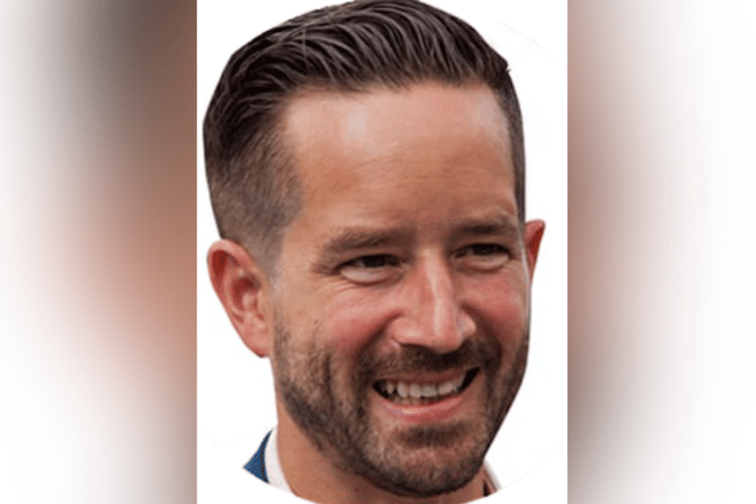

Earlier this week, the insurance data intelligence provider Percayso Inform (Percayso) announced it is set for expansion following a £3.4 million funding raise led by Praetura Ventures. Catching up with Insurance Business, MD Rich Tomlinson (pictured) highlighted how the investment came about and shared his top advice for brokers, MGAs and other insurance businesses looking to go down the venture capital route.
“Up to now, we’ve been self-funded, which has been fine for the last three and a half to four years,” he said. “But there comes a time in an organisation’s evolution where it’s good to have external professional investors involved for a number of reasons. Of course, the financial investment is very useful but they also bring with them a huge amount of expertise. And with Praetura Ventures, we just really liked them as well, we got on well with them on a personal level.”
Percayso has a range of plans that centre around new product development, Tomlinson said, and with this investment behind them, these plans can now be accelerated. This product development requires more resources in terms of its workforce and the firm will be looking to build out its team from its current roster of 22 people to between 25-30 by year-end. The provider is now looking to expand its engineering team but also its data science, product and customer-service areas.
Observing what firms should be looking for when considering welcoming investment, Tomlinson emphasised the need to find partners who will guide you through every step of the process and offer significant knowledge and experience. That personal touch is critical, he said, and he paid special credit to Praetura’s Guy Weaver and Sim Singh-Landa who facilitated Percayso’s journey.
“[Praetura’s] slogan is ‘more than money’, which we really liked,” he said. “A lot of professional investors put money forward, and we talked to a lot of those where we were saying, ‘but what else?’ For Praetura, more than money means advice, it means input where you need it and when you ask for it. They’re not imposing anything on us, which is great because we know how to run our business, we know our strategy, etc.
“But they’re very good at helping us with technology queries or getting us credits for cloud hosting, or putting us in touch with other people in their network who have gone through something similar. For instance, we’re integrating a new CRM system within our business, and they’ve already got a lot of experience with that, they’ve got a super-user who’s going to help us with the integration, they can get discounts from the supplier and they’ve got other people who’ve already gone through the same thing. Those kinds of things are what makes this a really good fit.”
Praetura’s network of investments is also a key draw for Percayso, which feels like it’s now part of that wider “family”, Tomlinson said, and those considering a fundraise should look at the wider network of every potential investor to see where there is the opportunity for future collaborations. Tomlinson noted that now Percayso is plugged into that wider network, he has the opportunity to connect with other founders in the wider portfolio. Within that is the chance for these businesses to share data, insights, and knowledge around their key successes, growing pains and challenges.
On the other side of the equation, he outlined what insurance businesses need to get right when they’re looking to bring on the right kind of investor. Having a knowledgeable and experienced team is critical, he said, as the strength of your team is a key metric for investors. In addition, businesses need to be prepared for the due diligence discussions that go into making a deal as it’s a very detailed process and involves a variety of stakeholders.
For Percayso, Tomlinson said, that due diligence process ended up being a strong, independent validation of its market proposition as Praetura was delighted by the feedback from clients and the independent auditor involved alike. However, he noted that firms must be aware that these extensive checks will ensure whether they truly are “walking the walk”.
“Also, you should be really clear in terms of your mission, what you’re trying to achieve and what problem you’re trying to solve,” he said. “I think often the tendency is to go into too much detail around the product features but you need to be thinking about that problem you’re trying to solve and how you will solve that in a way that’s ideally different to the competition. Getting to grips with that is fundamentally the most important thing.”
Keep it simple, is another key piece of advice offered by Tomlinson. Nobody wants a business plan that’s 100 slides long, far better to boil that down to the essentials – maybe 10 to 12 slides – and then save the additional details for the appendices. Also essential is to be able to show the progress that you’ve made since you started the venture. Your product or service doesn’t need to be live but you do need to be able to show what you’ve built so far, what partnerships you’ve formed, or what stage of the conversation you’re at with new clients.
“You don’t need to be live and have 10,000 customers on board, but you do need those little proof points, whether that’s what PR you’ve got or what awards you’ve won,” he said. “Those are good proof points to point out to the investor that you’re actually going along the right direction and that there’s a fair likelihood you’re going to be successful. I think all of those things are useful on that journey.”
